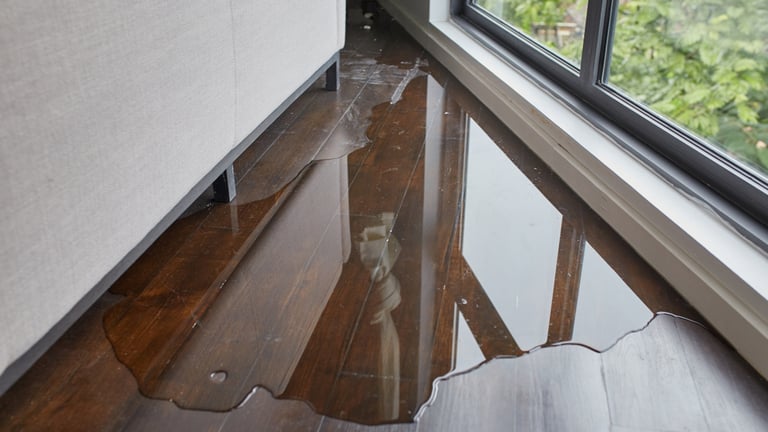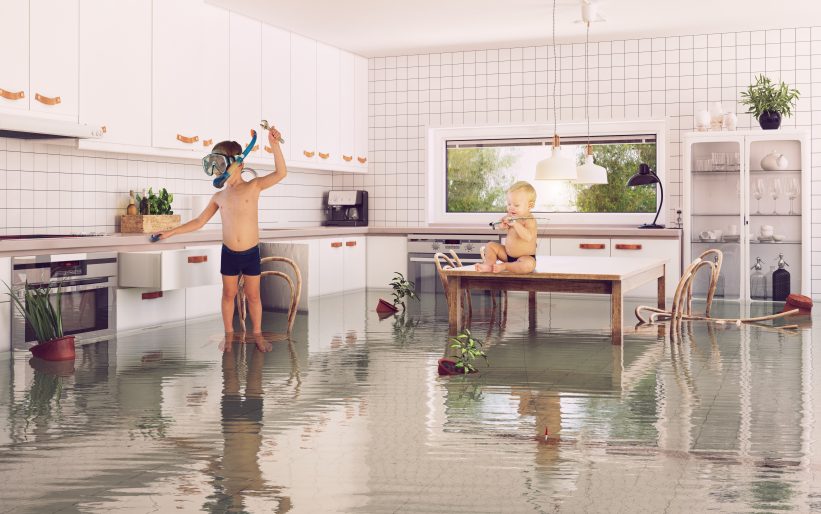The article which follows involving Ways to Reduce The Risk Of Fire And Water Damage is exceedingly remarkable. Check it out for your own benefit and figure out what you think of it.

Water provides life, but water breach on some components where it's not intended to be can lead to damage and also hassle. If the water seeps into your structure, it can peel away the surface and also erode the material's structure. Mold and mildew and mildew also prosper in a wet environment, which can be hazardous for your and also your family's health. Furthermore, residences with water damage smell old and also moldy.
Water can originate from several resources like tropical storms, floods, ruptured pipelines, leakages, as well as drain concerns. It's much better to have a functioning expertise of security preventative measures if you have water damage. Right here are a couple of guidelines on exactly how to handle water damage.
Do Prioritize House Insurance Coverage Coverage
Seasonal water damages can originate from floodings, seasonal rains, and also wind. There is additionally an occurrence of a sudden flood, whether it came from a damaged pipeline that suddenly breaks into your home. To secure your residence, get home insurance policy that covers both acts of God such as all-natural calamities, as well as emergency situations like damaged plumbing.
Don't Fail To Remember to Switch Off Utilities
When catastrophe strikes and you remain in a flood-prone area, turn off the major electric circuit. Turning off the power avoids
electric shocks when water can be found in as water functions as a conductor. Do not forget to switch off the main water line shutoff as a means to avoid even more damage.
If the floodwaters are obtaining high, maintain your furnishings stable as they can move as well as trigger extra damage.
Do Keep Proactive and also Heed Weather Condition Informs
If you live in a location plagued by floodings, remain prepared as well as aggressive at all times. Listen to the news as well as discharge cautions if you live near a body of water like a river, lake, or creek .
Don't Ignore the Roof
Before the weather condition transforms terrible and for the worse, do a roof covering evaluation. A better habit is to have a yearly roof covering inspection to alleviate future troubles as well as complex issues. A great roofing without any holes as well as leaks can be a good guard against a tool as well as the rainfall to avoid rain damages. Your contractor needs to care for the malfunctioning seamless gutters or any other signs of damages or weakening. An inspection will stop water from flowing down your walls and soaking your ceiling.
Do Take Note Of Little Leaks
A ruptured pipeline does not occur in a vacuum cleaner or over night. There are red flags that can draw your attention and also indicate to you some weakened pipelines in your home. Signs of red flags in your pipes include gurgling paint, peeling off wallpaper, water touches, water stains, or dripping noises behind the wall surfaces. There are signs that the pipe will certainly rupture. If you see these signs, do not wait on an escalation. Repair work as well as examine your plumbing fixed before it causes large damages to your home, finances, and a personal headache.
Don't Panic in Case of a Ruptured Pipe
Maintaining your clearheadedness is vital in a time of situation. Since it will suppress you from acting quick, panicking will just intensify the issue. Panic will certainly also offer you added stress and anxiety. When it comes to water damages, timing is key. The longer you wait, the more damages you can expect as well as the worst the outcomes can be. Immediately closed off your main water shutoff to cut off the source as well as protect against more damages if a pipe ruptureds in your home. Unplug all electric outlets in the location or turn off the circuit breaker for that part of your home. Lastly, call a credible water damages repair expert for assistance.
Water provides life, however water invasion on some parts where it's not intended to be can result in damages as well as hassle. In addition, houses with water damages scent old and moldy.
Seasonal water damage can come from floods, seasonal rains, and wind. Indications of red flags in your pipelines include bubbling paint, peeling wallpaper, water streaks, water discolorations, or dripping audios behind the walls. If a pipe bursts in your house, promptly shut off your primary water valve to reduce off the resource as well as prevent more damages.
6 Water Damage Restoration Do’s and Don’ts
Secure the area
First, ensure that it’s safe to be where the water is. Depending on the extent of the damage, you could be faced with a situation that’s dangerous to be in. Turn off the water supply and power supply, and disconnect appliances or mechanical tools that could conduct electricity or cause additional water to fill the area. Cover any holes in the roof or walls with a tarp so that the elements are kept out. Look for rodents and other pests that may have decided to come in or have been brought with the water. Secure heavy furniture or equipment that could collapse, or – better yet – take it out of the building completely. Immediately decide if it’s a place you can continue to be in until help arrives, being mindful of staff or customers that could get into harm’s way while you wait.
Call your insurance
The next thing you should do is reach out to your insurance company. Even if your damage was caused by flooding, and you don’t have a flood policy, it’s worth investigating. Depending on the cause of the water, there may be a way for a policy to cover it, especially if it’s the fault of someone else who has insurance coverage.
Remove valuables
Some things may have already been damaged beyond repair, but if you can move expensive items from the building, do so. Special equipment, computers and, and financial documents should be relocated off-site, if possible. Even if they can be put up above the waterline, natural disasters and building damage can attract criminals. You don’t want people taking advantage of the weakened structure of your office to steal from you.
Put up the things you can
Equipment and furniture that hasn’t already been damaged should be moved to the highest level in your building or set on top of other furniture. Remember that the entire room will be humid and damp, even if items are above the waterline. Just being in a flooded building can cause them to grow mold or become musty, so do this only if you can’t take them out of the structure completely.
Don’t remediate on your own
The biggest thing to remember when dealing with water damage, whether it came from a storm or an exploded toilet, is that you can’t handle much of the process by yourself. Even if you weren’t so already overwhelmed with losing your home or office to water, you don’t likely have the tools and industry-accepted resources to put the area back to a healthy, stable condition. In addition to water pumps, fans, and dehumidifiers, there may be materials that need to be demoed and reinstalled. The entire process of water damage remediation is a long one, and every step must be handled with care to ensure it doesn’t come back as a new problem. Home and office owners frequently try to handle water problems on their own, but the truth is that it can be difficult to know the extent of the damage just by looking at it.
Also, if it’s your personal business, you’re likely to be emotional and feel sentimental about the items damaged. You may not be able to reasonably assess if things need to be replaced. Everything from the carpet to the paint has a history; having a third-party expert team come in and give it to you straight is the best possible outcome. They can let you know just what can remain, and what has to go. In the end, removing everything that is beyond repair is best to avoid further health issues from mold or a collapsing structure.
Delay getting help
As you’ve read above, the consequences of trying to handle too much of the restoration process can have expensive outcomes. Doing things wrong is costly! Another way to add to the total bill for fixing the water problem is in waiting too long. If you try a “wait and see” approach, your building may be silently crumbling underneath the moisture, or mold may be starting to take hold. If you’re convinced it’s a job for the professionals, don’t wait a minute. As soon as you see that it’s going to be a problem, make the call.
https://idealsf.com/blog/water-damage/6-water-damage-restoration-dos-and-donts/

We were shown that article on Simple Solutions To Preventing Fire And Water Damage To Your Home from a friend on a different website. Do you know about anybody else who is sincerely interested in the niche? Feel free to share it. Many thanks for your time spent reading it.